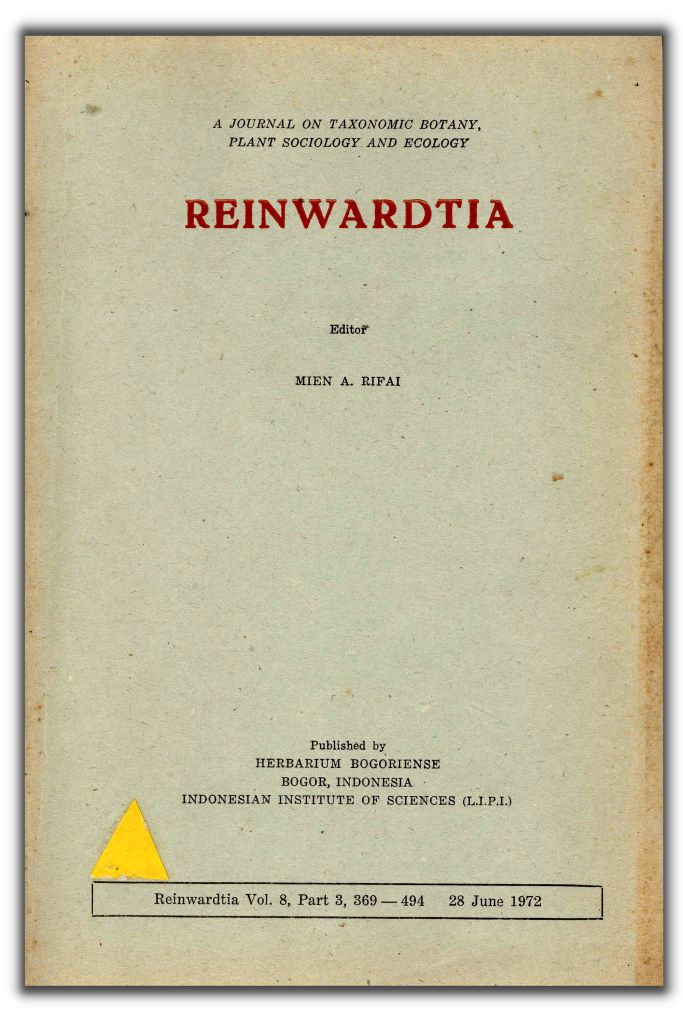A NEW SPECIES OF ZINGIBER (ZINGIBERACEAE) FROM ENGGANO ISLAND, INDONESIA
Main Article Content
Abstract
ARDIYANI, M. 2015. - A new species of Zingiber (Zingiberaceae) from Enggano Island, Indonesia. Reinwardtia 14 (2): 307 - 310. - A species of Zingiber Miller (Zingiberaceae), Z. engganoensis Ardiyani, from Enggano Island, Indonesia is described. The species is only known from its type locality. It is similar to Z. spectabile Griff. but with some morphological differences. Three-locus DNA barcodes (rbcL, matK and ITS2) of the new species were generated for its identification purposes
Article Details
Issue
Section
Articles
References
KRESS, W.J. & ERICKSON, D.L. 2007. A two-locus global DNA barcode for land plants: the coding rbcL gene complements the non-Coding trnH-psbA spacer region. PLoS ONE 2: e508.
VAN STEENIS, C.G.G.J. 1950. Flora Malesiana. Vol. I. Noordhoff, Jakarta, 639 p.

